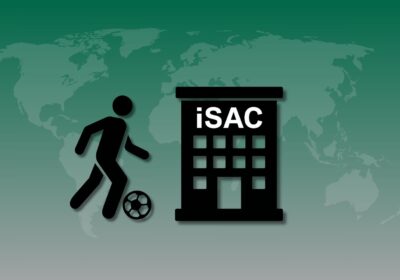USF’s relocated recreational fields provide space for sports clubs

USF has completed the relocation of its recreational fields, said Chris Marks, USF’s director of recreation and wellness.
Sycamore Fields, the site of USF’s future on campus stadium, served as a hub for student recreation. The area’s redevelopment led to the displacement of various recreational facilities.
“We had a land swap right there,” Marks said in Tuesday’s Student Government senate meeting. “So the new Research Park fields are now open, serving the sports club community.”
Related: Construction for displaced recreational facilities to be completed by next fall
After months of development, the university opened new recreational fields for public use. The university did not hold a formal ceremony before allowing access to the fields in January.
The new complex serves as home to 14 sports clubs, providing a venue for both practices and home competitions.
USF’s rugby club hosted the first ever home match on the new fields on Feb.1 Marks said it was a good gesture for the club to be the first because of its history.
“It started back in the 60s, and it has been running continuously since then, “ Marks said. “So I kind of thought that was a cool way to break in our new field complex to host a rugby match”
Related: USF breaks ground on campus stadium: ‘Championships will be won here’
The new recreational fields are located on previously undeveloped land in the USF Research Park. The complex spans 112 acres and features four multipurpose recreation fields, two recreational softball fields, a fitness trail, and a new restroom and storage facility.
USF spokesperson Ryan Hughes said the project was developed with an $8.1 million budget.
Initial plans, estimated at $17.2 million in 2023, included additional amenities, such as bleachers and scoreboards.
Some practices are held from Monday to Friday, while matches are scheduled for Saturday.
One of the team’s utilizing the fields is the USF’s women’s flag football club. The team previously practiced at Sycamore Fields, which will now be home to USF’s on-campus stadium.
Members of the women’s flag football club said its former practice area presented multiple challenges.
The teams said it lost equipment due to water damage in Sycamore’s storage facility and dealt with practice delays caused by a sinkhole among other issues.
USF women’s flag football financial officer Kaitlyn Eisenberg said she welcomed the change to move from Sycamore to the Research Park fields.
“There were times when I thought we needed better fields—it definitely got worn down,” Eisenberg said. “There were a ton of people playing on it all the time, so I really think that this is an upgrade.”
Jade Coslop, president of the women’s flag football club, said her only issue with the fields is where it is located. She said the new fields aren’t as easy to spot as Sycamore.
“It’s a little hard to find compared to Sycamore Fields,” Coslop said. “The parking is a little difficult as well.”
A parking lot for the recreational fields is located across the street on Spectrum Boulevard. The fields will share the lot with visitors of Magnolia Fields and the USF Botanical Gardens.
To make way for the new fields, trees were removed from the site. Hughes said USF made it a “priority” to minimize environmental impact during construction.
Hughes said the university plans to plant news trees across to compensate for those that were lost.
The relocation of the recreational facilities are temporary. A need for research facilities will cause the fields to be relocated once more in seven to 10 years
Hughes did not provide financial documents at the time of publication.







